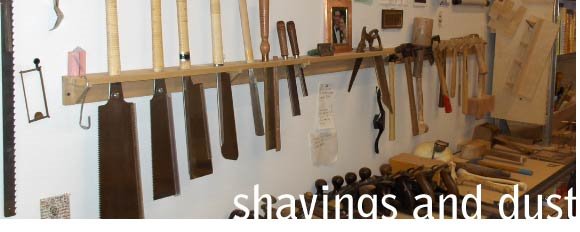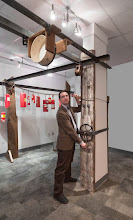a letterpress designer, an itinerant copy writer, and a furniture maker are sitting around a fire...
This sounds like the beginning of an irrepressibly nerdy joke, but as it happens this was Friday morning last week. One of the things that I am profoundly thankful for in my life is that my path seems to cross others' in unpredictable and delightful ways. So Friday morning last week I ended up sitting and talking to two people that it is unlikely I would ever have crossed paths with about something that turned out to be a common thread and a common passion: Craft.
Casey McGarr, who has a truly dizzying array of old wood type (and you know how I feel about wood) told us that many people turn to him for letterpressed invitations or cards with the expressed explicit desire that the type be smashed into the paper "so people know that it is letterpressed." I can understand this thought process, I suppose. So many of these once-necessary-now-nearly-defunct crafts face the same kind of requests, this idea that the process should be evident in the product so that the user or viewer will know how the object was produced. I do this in my own work as well; leave plane marks evident, or celebrate jointery or hardware to make a point and to use my work as educational tools for the user.
The thing about that kind of approach is that it is actually antithetical to the traditional intention of artisans who use this technology. A good letterpress operator will know how to adjust the press so that the type just kisses the paper enough to transfer the ink but not enough to deform the paper. This is exactly the same as blacksmithing, for example. George Martell, the smith who gave me what few smithing skills I have, told me that a good smith never leaves a hammer mark, that a piece that is well made is smooth and straight and shows no marks at all of the process of making. Or of songwriting: if the lyrics are too clever (say Gilbert and Sullivan, for example) we become aware of the cleverness of the writing but can lose sight of the intended message.
Which begs a familiar question: What is the point of all of this, process or product? It could be both, I suppose, but this is another one of those root questions that I come around to now and then that does not seem to go away. How can I as a maker celebrate the process and materials in a way that feels honest and clear while at the same time creating an object of beauty and use? When am I smashing the paper, and when am I making a legitimate statement about my stance as a maker and about my respect for tradition?
When I wrote about Pye and his bowls not too long ago, I was trying to unravel a different part of the same question, which at the end of the day might be about means and ends as much as it is about process and product. Whichever way we come at this question, though, it comes down to intent, and to methods of work, and to choice-making. And it does not seem to go away, which I think is a good thing.
What a lovely way to start a Friday morning last week. And how lucky I was to be able to spend time with folks who are interested in asking the same questions that I am asking. And how very informative to have the questions phrased in unfamiliar language. The Texas trip was great in so many ways.
Subscribe to:
Post Comments (Atom)


No comments:
Post a Comment